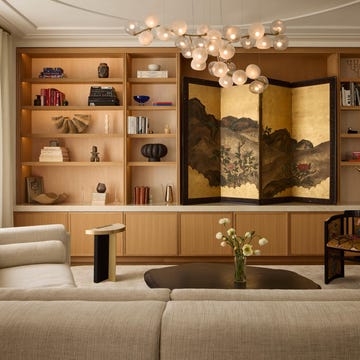Buying the worst house on the best street is a mantra followed by seasoned property renovators. Interiors can be tailored, but the energy of a neighbourhood either fits your lifestyle or it doesn’t. French-born interior designer Emma Stevenson has lived in the vibrant, multicultural setting of Notting Hill for most of her life, and so, after her divorce, she was keen to ensure her four children continued to enjoy the urban-village setting.
Her estate agent hesitated to show her this modestly scaled terraced house because it was in such poor condition, but it was the perfect opportunity for Emma to remould it to her requirements.
‘I’m not fazed by a gut job. In fact, for my own home I preferred the idea. The interiors hadn’t been touched for 60 years, but there was so much love in this house,’ she says. ‘I knew it was going to be a huge project, but as my second complete professional refurb, I felt I could handle it.’
What's everyone reading?
The property, located in the Pembridge conservation area, was the last on the street without an upper extension. Emma felt confident she could navigate planning rules, and she obtained approval to extend and restructure.
The overhaul – which took 19 months – involved digging and expanding to enlarge the lower-ground floor into the rear garden, removing unnecessary corridors, extending the top floor in order to increase the bedroom count to three, and introducing a sweeping double-height atrium.
‘The structural replan was very important to me,’ Emma explains. ‘The house is small, but I still wanted it to feel grand in a certain way, to make all the spaces connected and function well for a family of five, and to marry my contemporary aesthetic with some of the original architectural details.’
The concept of the double void not only gives a sense of space and brings in lots of light, but also links two floors visually and functionally. Now, on entering the ground floor, the eye naturally follows the curve of the glazing down into the lower-ground level, which gives the feel of a Parisian duplex.
Emma challenged her architect to think laterally – as one would for the compact floorplan of a boat – to add discreet storage at every opportunity. ‘I fought for that vision with the builders, too,’ she says. Even though it is a tiny house, they incorporated a full-sized kitchen, a dining area that seats 10, a walk-in pantry, laundry room and corridor storage.
‘No space is wasted; we utilised every inch,’ she says. ‘I pushed the trades away from their usual ways of working. They had the expertise, but I had the creative vision. It probably drove them a little crazy, but I believe all are very proud of their part in the end result. I would do it all again.’ emmastevenson.co.uk

















